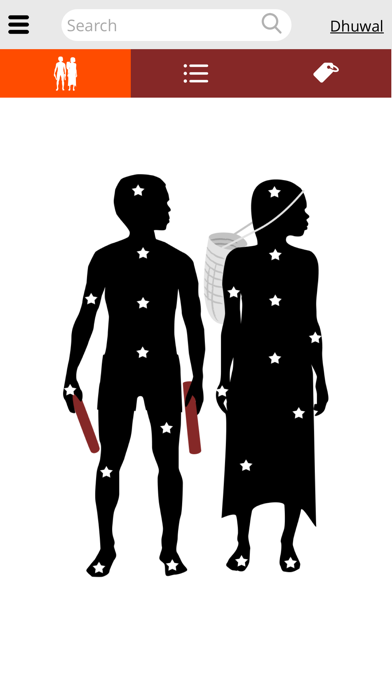
Rumbalpuy Dhäwu
This multilingual dictionary contains clearly explained, basic information on anatomy, pathologies and procedures in Plain English, and the Yolŋu languages, Dhuwal, Dhuwala and Dhaŋu. The app is free and contains easy-to-navigate content in audio, text and picture form.
The app has two main aims: The first is to make Western understandings about health and medical terminology available in Yolŋu languages. The second aim is to support maintenance of Yolŋu languages. All translation choices were made in order to help Yolŋu languages to stay vibrant through use in all areas of life.
The app is an ideal resource for medical practitioners, patients, Yolŋu language interpreters, and learners of Yolŋu languages.
Yolŋu languages are a group of Australian Indigenous languages spoken in North-east Arnhem Land. The names Dhuwal, Dhaŋu and Dhuwala are terms used to identify groups of Yolŋu clan languages by their respective terms for this. Not all of the Yolŋu languages are represented in this app. This app uses the clan languages of Djambarrpuyŋu (Dhuwal), Gälpu (Dhaŋu) and Gumatj (Dhuwala). We hope that English-speaking users from many backgrounds can also benefit from the Plain English explanations of the medical terminology available here.
FEATURES:
-Over 200 entries
-Audio recordings in three languages: Dhuwal (Djambarrpuyŋu), Dhuwala (Gumatj) and Dhaŋu (Gälpu)
-Text definitions in Plain English, Dhuwal, Dhuwala and Dhaŋu
-Over 140 pictures
-Password-protected mens health and womens health sections
-Picture finder
-Alphabetical list finder
-Category finder
The app is fully functional offline. When connected to the internet, the latest updates will be synchronised with your phone, using only a small amount of data.
This app is an adaptation of the bilingual print dictionary, “Dictionary of Anatomy: Dhäruk Mala ga Mayali Rumbalpuy", (ARDS Inc., 2009).
This app was made by ARDS Aboriginal Corporation with the generous financial support of The Australian Government Department of Communications and the Arts’ Indigenous Languages and Arts (ILA) program.



